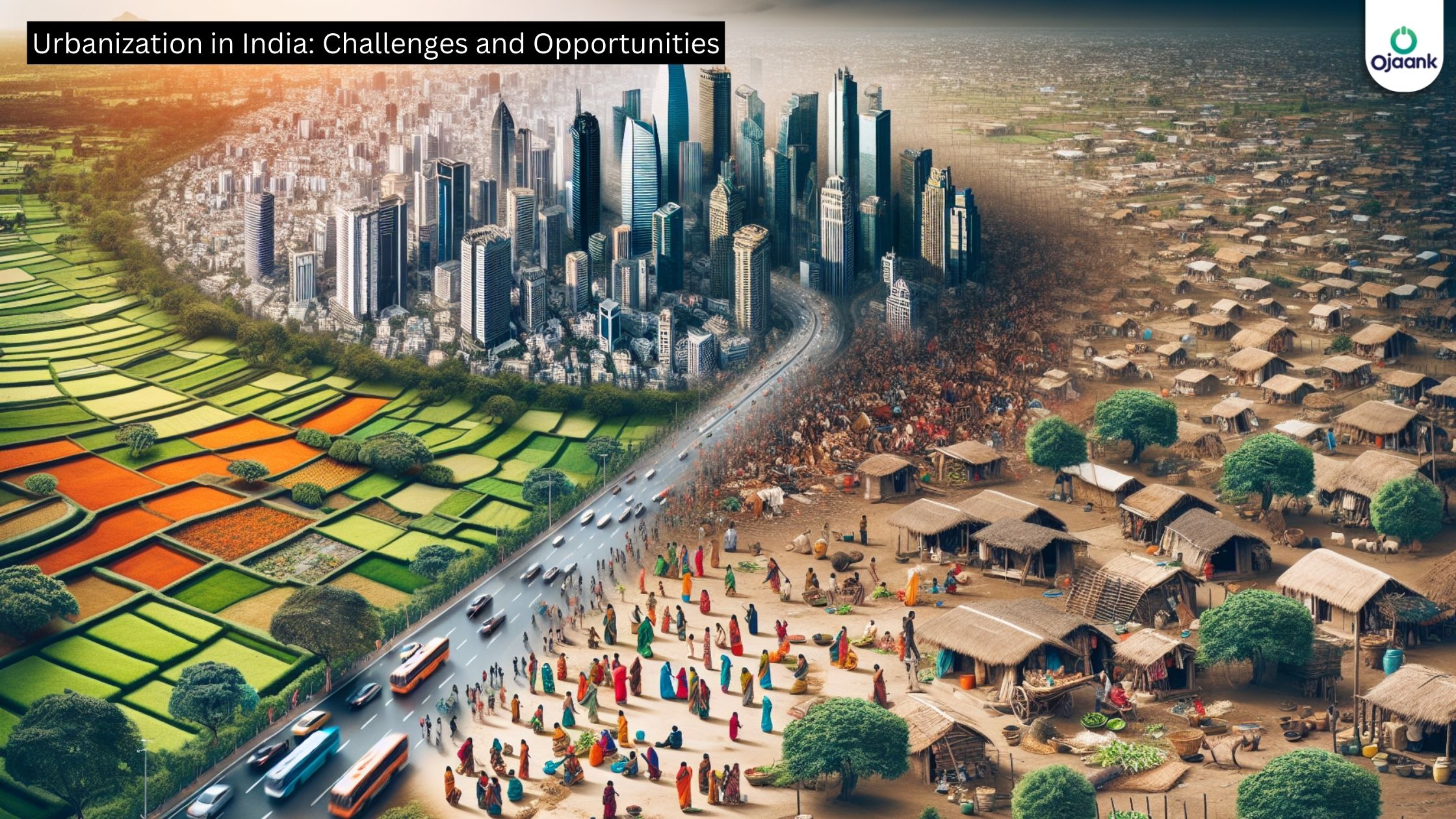Urbanization in India: Challenges and Opportunities

Urbanization in India: Challenges and Opportunities
Navigating the Future: Urbanization in India's Roadmap of Challenges and Opportunities
Introduction to Urbanization in India
-
Overview of Urban Growth: The landscape of Indian cities has seen rapid changes with the urban population soaring. As more people move to cities in search of better opportunities, the demographic makeup and the needs of urban areas continue to evolve dramatically.
-
Historical Context: Since gaining independence in 1947, India's urbanization trajectory has transitioned from sleepy towns and colonial port cities to bustling centers of commerce and culture. This growth has been both organic and, more recently, policy-driven.
-
Purpose of the Article: This discussion delves into the intricate web of challenges and opportunities that urbanization brings to the forefront in India, aiming to provide a nuanced view of this dynamic process.
Analyzing Urban Challenges
-
Infrastructure Deficits: Urban residents frequently face issues like congestion, lack of affordable housing, and inadequate public utilities. Cities like Delhi and Bangalore are notable examples where rapid growth has outpaced infrastructure development.
-
Environmental Concerns: Pollution is a significant challenge, exacerbated by industrial activities and vehicular emissions. Additionally, issues like waste management and water scarcity compound the sustainability challenges facing urban India.
-
Social Stratification: Urbanization has often widened the gap between the rich and the poor. Access to essential services like healthcare, education, and sanitation varies greatly across different urban socio-economic groups.
Economic and Technological Dimensions
-
Economic Impact: Urban centers contribute disproportionately to the country's GDP. Cities are hubs for jobs in services, manufacturing, and knowledge sectors, which also affects income levels.
-
Technological Advancements: Technology, including smart city initiatives and the Internet of Things (IoT), plays a pivotal role in addressing some of the urban challenges. For instance, projects like Digital India aim to transform the urban landscape through technology.
-
Business and Investment: Urban areas present a plethora of opportunities for both domestic and international investors, particularly in sectors like real estate, information technology, and retail.
Governance and Policy Framework
-
Urban Planning and Policies: The effectiveness of urban planning policies has been mixed, with some innovative successes and several areas needing significant improvement.
-
Public-Private Partnerships: Examples like the Delhi Metro project highlight successful collaboration between government and private sectors, offering valuable lessons for future urban development projects.
-
Legal and Regulatory Challenges: The complexity of land ownership laws, zoning regulations, and policy implementation poses hefty challenges in urban management.
Sociocultural Shifts and Urban Life
-
Changing Demographics: Migration, both from within India and internationally, significantly impacts the cultural and social fabric of cities, leading to a vibrant, albeit complex, urban culture.
-
Quality of Life: Urban areas offer better access to healthcare and education but also face issues like overcrowding and pollution which can degrade life quality.
-
Community and Urban Culture: Urban centers in India are melting pots of cultures, fostering new lifestyles and identities yet preserving traditional values.
City Case Studies
-
Mumbai: Known for its financial prowess, Mumbai faces severe constraints like housing shortages and flooding, but also shows innovation in areas like coastal road projects.
-
Bengaluru: Celebrated for its IT sector, Bengaluru is a city that balances modernity with heritage, grappling with challenges like traffic congestion and water scarcity.
-
Hyderabad: This city's growth is heavily driven by the technology sector, presenting unique opportunities and challenges, especially concerning infrastructure demands and housing.
Strategic Opportunities and Forward-Thinking
-
Harnessing Urban Potential: There are strategies that can transform urban challenges into growth opportunities, like improving public transport systems to reduce congestion and pollution.
-
Inclusive Urban Growth: It's essential to ensure that the benefits of urban growth are distributed across all sections of society, mitigating inequalities.
-
Future Trends in Urbanization: Anticipating demographic and technological changes over the next decades is crucial for sustainable urban planning.
Conclusion
-
Summary of Key Findings: Urbanization in India presents a complex mix of challenges and opportunities. By addressing issues such as infrastructure deficits, environmental concerns, and social disparities, cities can evolve into more sustainable, inclusive, and economically vibrant environments.
-
Call to Action: It is imperative for policymakers, businesses, and citizens to collaborate and innovate in shaping the future of urban India. Engaged governance and proactive citizen participation are key to navigating the urban future.